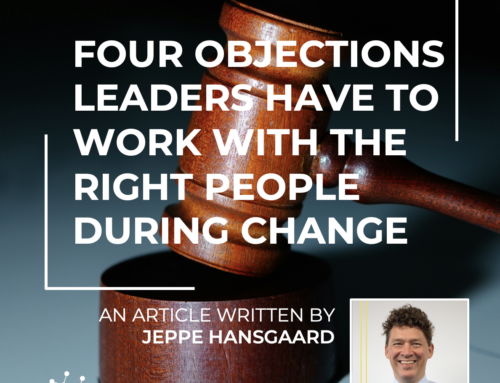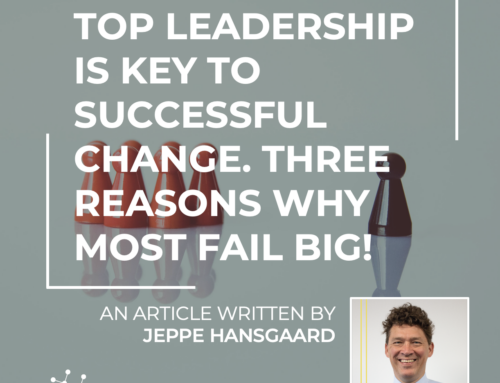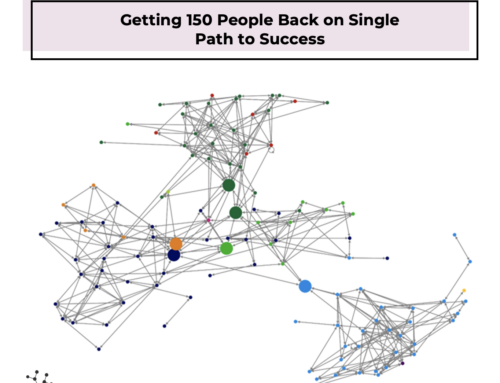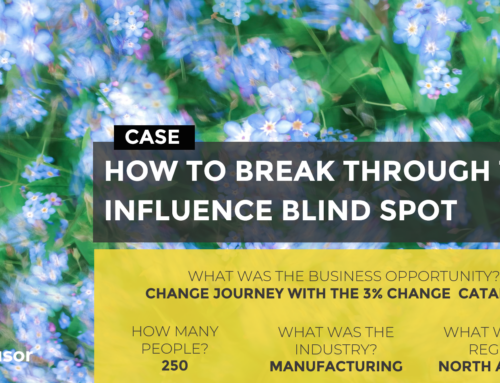How to Spark a Movement
Beyond Individual Passion?
Passion-driven initiatives and community engagement are gaining momentum as societal levers. A core group’s dedication to the shared cause can be a driving force for creating a movement of change. Theory suggests this much, but what about in practice – in real life? How can you establish the intrinsic dynamic of a core group to ensure success?
This was the question raised in one of our recent projects. A dedicated group of 100+ individuals united by a common passion across different organizations wanted to understand their impact on the community, and how they could improve to spark a true movement.
Though their enthusiasm was undeniable, the group encountered obstacles that restricted their ability to fully unleash their potential impact to spark a movement.
The Power of Shared Passion
The group’s commitment extended beyond mere enthusiasm; they actively pursued their mission by convening monthly meetings to strategize and share their collective vision. The collective vision was that their strong sense of purpose resonated with local communities, thereby initiating the spark for a larger movement. It’s undeniable that such passionate commitment has the potential to drive real change. They, however, must be channeled in a way to ensure it becomes a collective activity.
The Impact Hurdles
And that was one of the challenges: to act collectively. The two prominent issues that hindered the group’s progress were the frequency of meetings and the virtual nature of their interactions.
1. Frequency and Integration
While the monthly gatherings provided a platform for 30+ individuals to connect and collaborate, a subgroup experienced barriers due to infrequent attendance. This subgroup, numbering another 30+, found it difficult to integrate fully with the rest of the core group. The irregularity of their attendance created a sense of detachment, limiting their ability to contribute effectively to the cause.
2. Virtual Engagement and Relationship Building
The monthly meetings, held virtually, posed an additional challenge. The absence of physical proximity impeded the formation of deep and meaningful relationships among members. Building relationships, trust, and a shared sense of purpose is often expedited through face-to-face interactions. A study found that “people tend to underestimate the power of their persuasiveness via face-to-face communication” (Bohns, V., 2017). A face-to-face request, for example, was found 34 times more successful than an email.
Overcoming Challenges for Maximum Impact
It was clear that the challenges needed to be addressed by the group. They needed to provide a conducive environment for impact to flourish. They defined a couple of strategies to harness the full potential of the group’s commitment.
Strategy 1: Establish Flexible Meeting Cadence to Improve Attendance, Belonging and Integration
Recognizing the diversity of members’ commitments and schedules, it became clear how essential it was to establish a more flexible meeting cadence. This flexible meeting cadence could not reflect what was ‘convenient’ for those who could make it every month but be flexible towards those who cannot make it at the specific day and time. Structure meetings around them; not yourself. They started offering multiple meeting opportunities to accommodate both monthly and less frequent attendees at the meetings. This inclusivity resulted in higher attendance leading to a greater sense of belonging and integration.
Strategy 2: Hybrid Engagement Model to Strengthen Inclusivity
 A hybrid engagement model was needed to combine virtual and in-person interactions. This helped them to bridge the gap created by virtual-only meetings. Periodic physical gatherings, even if less frequent, facilitated the building of relationships and the strengthening of connections. This was done through yearly large events with 70+ people who attended. This was a successful approach that acknowledged the value of both virtual convenience and in-person fellowship. The next step was to use network insight on their group and the impact they had on the ecosystem to put people together at these yearly events. The group was inspired by how Innovisor had supported a company to strategically group top leaders who attended a leadership summit for different purposes, aiming to steer the company towards greater success by building the right groups for the right purposes while realizing the untapped potential.
A hybrid engagement model was needed to combine virtual and in-person interactions. This helped them to bridge the gap created by virtual-only meetings. Periodic physical gatherings, even if less frequent, facilitated the building of relationships and the strengthening of connections. This was done through yearly large events with 70+ people who attended. This was a successful approach that acknowledged the value of both virtual convenience and in-person fellowship. The next step was to use network insight on their group and the impact they had on the ecosystem to put people together at these yearly events. The group was inspired by how Innovisor had supported a company to strategically group top leaders who attended a leadership summit for different purposes, aiming to steer the company towards greater success by building the right groups for the right purposes while realizing the untapped potential.
Strategy 3: Nurture an Outward-Focused Group To Maximize Movement’s Impact
 The high connectivity of individuals who made sure everything was run smoothly internally needed to be supported by individuals who were more outward-focused. These outward-focused individuals needed to be the first in line to know what resources, insights, and updates to share with their external connections. Leveraging and supporting these individuals was a key priority so that they were better equipped to amplify the movement’s goals and activities through their own networks, increasing visibility and impact. This approach extended the movement’s reach and attracted new allies. A success that was already documented in other community-building projects such as the project that helped ecosystem-building to economic development in the Inland Empire in California (US). They also nurtured the right people in their ecosystem: the influencers, doers, and power players.
The high connectivity of individuals who made sure everything was run smoothly internally needed to be supported by individuals who were more outward-focused. These outward-focused individuals needed to be the first in line to know what resources, insights, and updates to share with their external connections. Leveraging and supporting these individuals was a key priority so that they were better equipped to amplify the movement’s goals and activities through their own networks, increasing visibility and impact. This approach extended the movement’s reach and attracted new allies. A success that was already documented in other community-building projects such as the project that helped ecosystem-building to economic development in the Inland Empire in California (US). They also nurtured the right people in their ecosystem: the influencers, doers, and power players.
Strategy 4: Digital Collaboration and Knowledge Sharing to Retain Involvement
In between meetings and events, fostering digital connections was crucial. Leveraging online platforms for discussions, updates, and idea-sharing can keep all members engaged and informed. This was a pain point! Individuals who had not attended the online monthly felt they were out of the loop. 40% felt they did not have tools that would enable them to share information. Digital collaboration and knowledge sharing required more attention, so those who could not attend physical or virtual meetings regularly remained informed, engaged, and involved.
Conclusion
The project revealed the intricate dynamics of a group’s impact on a shared cause. While passion and purpose are vital, strategic adaptation is equally essential for maximal effectiveness. By addressing the challenges of meeting cadence and virtual engagement, the group was able to overcome barriers and pave the way for a more inclusive, connected, and impactful movement.
In a world where community-driven societal change is pivotal, the lessons resonate far beyond this specific assignment.








